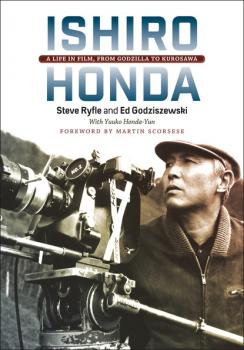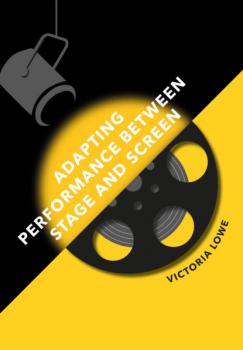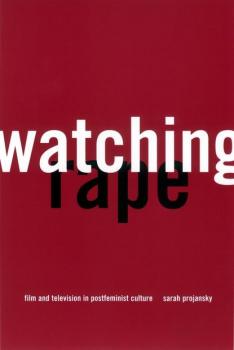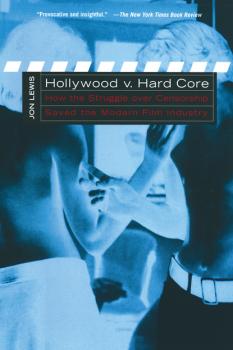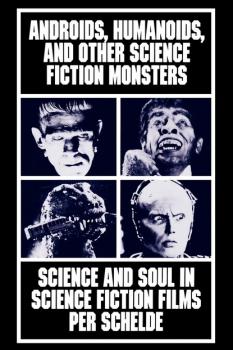ТОП просматриваемых книг сайта:
Кинематограф, театр
Различные книги в жанре Кинематограф, театр, доступные для чтения и скачиванияАннотация
<P>Ishiro Honda was arguably the most internationally successful Japanese director of his generation, with an unmatched succession of science fiction films that were commercial hits worldwide. From the atomic allegory of Godzilla and the beguiling charms of Mothra to the tragic mystery of Matango and the disaster and spectacle of Rodan, The Mysterians, King Kong vs. Godzilla, and many others, Honda's films reflected postwar Japan's real-life anxieties and incorporated fantastical special effects, a formula that appealed to audiences around the globe and created a popular culture phenomenon that spans generations. Now, in the first full account of this long overlooked director's life and career, authors Steve Ryfle and Ed Godziszewski shed new light on Honda's work and the experiences that shaped it—including his days as a reluctant Japanese soldier, witnessing the aftermath of Hiroshima, and his lifelong friendship with Akira Kurosawa. Ishiro Honda: A Life in Film, from Godzilla to Kurosawa features close analysis of Honda's films (including, for the first time, his rarely seen dramas, comedies, and war films) and draws on previously untapped documents and interviews to explore how creative, economic, and industrial factors impacted his career. Fans of Honda, Godzilla, and tokusatsu (special effects) film, and of Japanese film in general, will welcome this in-depth study of a highly influential director who occupies a uniquely important position in science fiction and fantasy cinema, as well as in world cinema. </P><P>Together, the authors have provided audio commentary tracks and produced supplemental material for numerous home video releases, including Ishiro Honda's Godzilla for the British Film Institute. They co-produced the documentary feature Bringing Godzilla Down to Size (2008).</P>
Аннотация
<P>The Sentient Archive gathers the work of scholars and practitioners in dance, performance, science, and the visual arts. Its twenty-eight rich and challenging essays cross boundaries within and between disciplines, and illustrate how the body serves as a repository for knowledge. Contributors include Nancy Goldner, Marcia B. Siegel, Jenn Joy, Alain Platel, Catherine J. Stevens, Meg Stuart, Andr&#233; Lepecki, Ralph Lemon, and other notable scholars and artists.</P><P><BR><B>Hardcover is un-jacketed.</B></P>
Аннотация
The book offers an introduction to adaptations between stage and screen, examining stage and screen works as texts but also as performances and cultural events. Case studies of distinct periods in British film and theatre history are used to illustrate the principle that adaptations can't be divorced from the historical and cultural moment in which they are produced and to look at issues around theatrical naturalism and cinematic realism. Written in a refreshingly accessible style, it offers an original analysis with emphasis on performance and event. It opens up new avenues of exploration to include non-literary issues such as the treatment of space and place, mise en scène , acting styles and star personas. The recent growth of digital theatre is examined to foreground the 'events' of theatre and cinema, with phenomena such as NT Live analysed for the different ways that 'liveness' is adapted. Adapting Performance Between Stage and Screen explores how cultural values can be articulated in the act of translating between mediums. The book takes as its subject the interaction between film and theatre and argues that, rather than emphasising differences between the two mediums, the emphasis should be placed on elements that they share, in particular the emphasis on performance and the participation in an event. It uses a number of case studies to show how this relationship is affected by changes in technology – the coming of film sound, the invention of live-casting – and in the nature of the event being offered to particular audiences. These examples, ranging from the well-known to the obscure, are all treated with relevant and knowledgeable analysis and a strong and appropriate sense of context. The book offers a welcome overview of previous work in this area and demonstrates the importance of basing analysis on historical context, as well as giving new insights into some familiar examples. Discussion ranges from Steven Spielberg and Alfred Hitchcock to Robert Lepage and Ivo van Hove. There are detailed analyses of Alfie , Gone Too Far and Festen as well as authoritative analyses of NT Live performances and British New Wave cinema. The book will be of primary interest to academics, researchers, teachers and students working in adaptation studies, film studies and theatre studies. Written in an accessible style it will appeal to teachers and students on A-level, undergraduate and postgraduate film, theatre, media and cultural studies courses. The chapter on digital theatres will add to the growing body of literature in this area and appeal to students and academics working on digital cultures and new media. Live screenings of theatre events are becoming more widely available and increasingly popular, including some of the productions discussed. There is potential interest for a general audience interested in British films, theatre and actors.
Аннотация
Looking at popular culture from 1980 to the present, feminism appears to be «over»: that is, according to popular critics we are in an era of «postfeminism» in which feminism has supposedly already achieved equality for women. Not so, says Sarah Projansky. In Watching Rape, Projansky undermines this complacent view in her fascinating and thorough analysis of depictions of rape in U.S. film, television, and independent video. Through a cultural studies analysis of such films as Thelma and Louise, Daughters of the Dust, and She's Gotta Have It, and television shows like ER, Ally McBeal, Beverly Hills 90210, and various made-for-tv movies, Projansky challenges us to see popular culture as a part of our everyday lives and practices, and to view that culture critically. How have media defined rape and feminism differently over time? How do popular narratives about rape also communicate ideas about gender, race, class, nationality, and sexuality? And, what is the future of feminist politics, theory, and criticism with regard to issues of sexual violence, postfeminism, and popular media? The first study to address the relationship between rape and postfeminism, and one of the most detailed and thorough analyses of rape in 25 years, Watching Rape is a crucial contribution to contemporary feminism.
Аннотация
Almost half a century ago, Jean-Luc Godard famously remarked, «I await the end of cinema with optimism.» Lots of us have been waiting forand wondering aboutthis prophecy ever since. The way films are made and exhibited has changed significantly. Films, some of which are not exactly «films» anymore, can now be projected in a wide variety of wayson screens in revamped high tech theaters, on big, high-resolution TVs, on little screens in minivans and laptops. But with all this new gear, all these new ways of viewing films, are we necessarily getting different, better movies? The thirty-four brief essays in The End of Cinema as We Know It attend a variety of topics, from film censorship and preservation to the changing structure and status of independent cinemafrom the continued importance of celebrity and stardom to the sudden importance of alternative video. While many of the contributors explore in detail the pictures that captured the attention of the nineties film audience, such as Jurassic Park , Eyes Wide Shut , South Park: Bigger, Longer and Uncut , The Wedding Banquet , The Matrix , Independence Day , Gods and Monsters , The Nutty Professor , and Kids , several essays consider works that fall outside the category of film as it is conventionally definedthe home «movie» of Pamela Anderson and Tommy Lee's honeymoon and the amateur video of the LAPD beating of Rodney King. Examining key films and filmmakers, the corporate players and industry trends, film styles and audio-visual technologies, the contributors to this volume spell out the end of cinema in terms of irony, cynicism and exhaustion, religious fundamentalism and fanaticism, and the decline of what we once used to call film culture. Contributors include: Paul Arthur, Wheeler Winston Dixon, Thomas Doherty, Thomas Elsaesser, Krin Gabbard, Henry Giroux, Heather Hendershot, Jan-Christopher Hook, Alexandra Juhasz, Charles Keil, Chuck Klienhans, Jon Lewis, Eric S. Mallin, Laura U. Marks, Kathleen McHugh, Pat Mellencamp, Jerry Mosher, Hamid Naficy, Chon Noriega, Dana Polan, Murray Pomerance, Hillary Radner, Ralph E. Rodriguez, R.L. Rutsky, James Schamus, Christopher Sharrett, David Shumway, Robert Sklar, Murray Smith, Marita Sturken, Imre Szeman, Frank P. Tomasulo, Maureen Turim, Justin Wyatt, and Elizabeth Young.
Аннотация
Satirical TV has become mandatory viewing for citizens wishing to make sense of the bizarre contemporary state of political life. Shifts in industry economics and audience tastes have re-made television comedy, once considered a wasteland of escapist humor, into what is arguably the most popular source of political critique. From fake news and pundit shows to animated sitcoms and mash-up videos, satire has become an important avenue for processing politics in informative and entertaining ways, and satire TV is now its own thriving, viable television genre. Satire TV examines what happens when comedy becomes political, and politics become funny. A series of original essays focus on a range of programs, from The Daily Show to South Park , Da Ali G Show to The Colbert Report , The Boondocks to Saturday Night Live , Lil’ Bush to Chappelle’s Show , along with Internet D.I.Y. satire and essays on British and Canadian satire. They all offer insights into what today’s class of satire tells us about the current state of politics, of television, of citizenship, all the while suggesting what satire adds to the political realm that news and documentaries cannot.
Аннотация
In 1972, The Godfather and Deep Throat were the two most popular films in the country. One, a major Hollywood studio production, the other an independently made «skin flick.» At that moment, Jon Lewis asserts, the fate of the American film industry hung in the balance.[/i]Spanning the 20th century, Hollywood v. Hard Core weaves a gripping tale of censorship and regulation. Since the industry's infancy, film producers and distributors have publicly regarded ratings codes as a necessary evil. Hollywood regulates itself, we have been told, to prevent the government from doing it for them. But Lewis argues that the studios self-regulate because they are convinced it is good for business, and that censorship codes and regulations are a crucial part of what binds the various competing agencies in the film business together. Yet between 1968 and 1973 Hollywood films were faltering at the box office, and the major studios were in deep trouble. Hollywood's principal competition came from a body of independently produced and distributed films–from foreign art house film Last Tango in Paris to hard-core pornography like Behind the Green Door –that were at once disreputable and, for a moment at least, irresistible, even chic. In response, Hollywood imposed the industry-wide MPAA film rating system (the origins of the G, PG, and R designations we have today) that pushed sexually explicit films outside the mainstream, and a series of Supreme Court decisions all but outlawed the theatrical exhibition of hard core pornographic films. Together, these events allowed Hollywood to consolidate its iron grip over what films got made and where they were shown, thus saving it from financial ruin.
Аннотация
Winner of the 2009 Society for Cinema and Media Studies Katherine Singer Kovacs Book Award The Midwest of popular imagination is a «Heartland» characterized by traditional cultural values and mass market dispositions. Whether cast positively —; as authentic, pastoral, populist, hardworking, and all-American—or negatively—as backward, narrow–minded, unsophisticated, conservative, and out-of-touch—the myth of the Heartland endures. Heartland TV examines the centrality of this myth to television's promotion and development, programming and marketing appeals, and public debates over the medium's and its audience's cultural worth. Victoria E. Johnson investigates how the «square» image of the heartland has been ritually recuperated on prime time television, from The Lawrence Welk Show in the 1950s, to documentary specials in the 1960s, to The Mary Tyler Moore Show in the 1970s, to Ellen in the 1990s. She also examines news specials on the Oklahoma City bombing to reveal how that city has been inscribed as the epitome of a timeless, pastoral heartland, and concludes with an analysis of network branding practices and appeals to an imagined «red state» audience.Johnson argues that non-white, queer, and urban culture is consistently erased from depictions of the Midwest in order to reinforce its «reassuring» image as white and straight. Through analyses of policy, industry discourse, and case studies of specific shows, Heartland TV exposes the cultural function of the Midwest as a site of national transference and disavowal with regard to race, sexuality, and citizenship ideals.
Аннотация
The one thing everybody knows about Jerry Lewis is that he is beloved by the French, those incomprehensible hedonistic strangers across the sea. The French understand him, while in the U.S. he is at best a riddle, not one of us. Lewis is someone we take profound pleasure in excluding, if not ridiculing. Enfant Terrible! Jerry Lewis in American Film is the first comprehensive collection devoted to one of the most controversial and accomplished figures in twentieth-century American cinema. A veteran of virtually every form of show business, Lewis's performances onscreen and the motion pictures he has directed reveal significant filmmaking talents, and show him to be what he has called himself, a «total filmmaker.» Yet his work has been frequently derided by American critics. This book challenges that easy reading by taking a more careful look at Lewis's considerable body of work onscreen in 16 diverse and penetrating essays. Turning to such films as The Nutty Professor , The Ladies Man , The King of Comedy , The Delicate Delinquent , Living It Up , The Errand Boy , The Disorderly Orderly , Arizona Dream , and The Geisha Boy , the contributors address topics ranging from Lewis's on- and offscreen performances, the representations of disability in his films, and the European obsession with Lewis, to his relationship with Dean Martin and Lewis's masculinity. Far from an out of control hysteric, Enfant Terrible! instead reveals Jerry Lewis to be a meticulous master of performance with a keen sense of American culture and the contemporary world. Contributors include: Mikita Brottman, Scott Bukatman, David Desser, Leslie A. Fiedler, Craig Fischer, Lucy Fischer, Krin Gabbard, Barry Keith Grant, Andrew Horton, Susan Hunt, Frank Krutnik, Marcia Landy, Peter Lehman, Shawn Levy, Dana Polan, Murray Pomerance, and J. P. Telotte.

